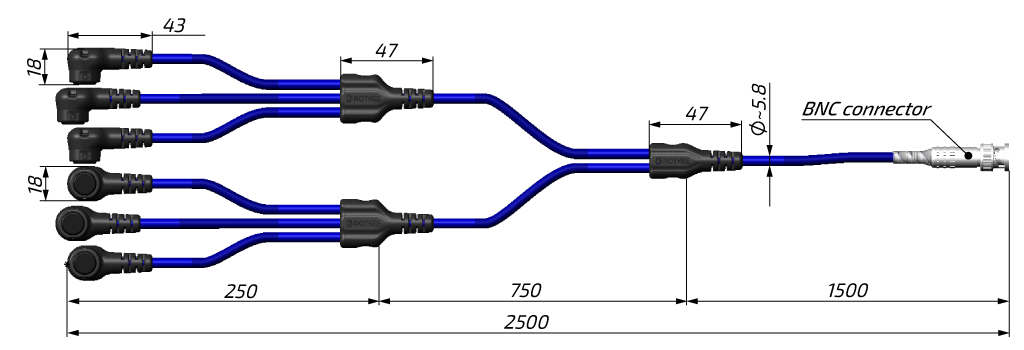Lx6 Coil-on-Plug Probe
- 42.00 USD
-
Short Attributes
Lx6 is an inductive type sensor designed for diagnosing COP ignition systems. Lx6 can also be used for distributor and DIS systems. The sensor is directly mounted on an ignition coil and gives the ability to measure secondary voltage parameters, accessing ignition spark capability and identifying problems related to high-voltage wires, plugs, caps and coils.
Sensor Design

The sensor’s case is rubberized, which makes a fragile sensor element damage-proof. A soft cable with a high density braided copper shield to minimize noise pickup so you can get high accuracy of the measured signal.
Items Included
- Coil-on-plug probe – 1pc
Waveforms samples
Video Tutorials
Diagnosing an ignition system with the help of Lx1, Lx4 sensors and MT Pro automotive oscilloscope, connecting the sensor to the engine, oscilloscope tuning, waveform recording while idle running and increased load. I’ll demonstrate all of this with an example of Seat Ibiza.
Sensor Operation Principle
The ignition coil of the internal-combustion engine operates on the principle of a step-up transformer and has two windings and a shared core. Therefore, when current strength in the primary winding changes, it triggers EMF, which results in current strength change in the secondary winding, and vice versa. If an extra inductance coil is placed in the ignition coil’s electromagnetic field, it’ll cause EMF in proportion to the changes in the coil’s magnetic field. This is how a secondary voltage waveform is obtained.
The detecting element of the Lx6 sensor is an inductance coil. In order to detect a secondary voltage signal, the sensor’s detecting head is to be fixed on the surface of the ignition coil, within its electromagnetic field. Generally, the upper part of the ignition coil is a flat area for the detecting head to be placed on. Double-sided foam tape will do for the fixing on the coil case. Before assembling, the surface of the coil and sensor is to be cleaned and dusted.

The secondary voltage signal’s shape depends on the sensor’s location in relation to the coil’s electromagnetic field. That’s why when placing a detecting head it’s advisable to keep in mind the following. The symmetry axis of the sensor’s detecting coil is to be placed along the axis of the ignition coil’s core. The distance between the coil and the head is to be as minimum as possible. If you can’t define the ignition coil’s type by eye, you can then change the sensor’s location in relation to the ignition coil until the oscilloscope catches a signal with the biggest amplitude.
Can Lx6 be used on 4-cylinder engines, or is Lx4 required?
Lx6 Coil-on-Plug Probe can be used on all engines regardless of the number of cylinders. Simply leave the unused leads disconnected and keep them away from sources of interference such as ignition coils, injectors, the alternator, and other solenoids.











